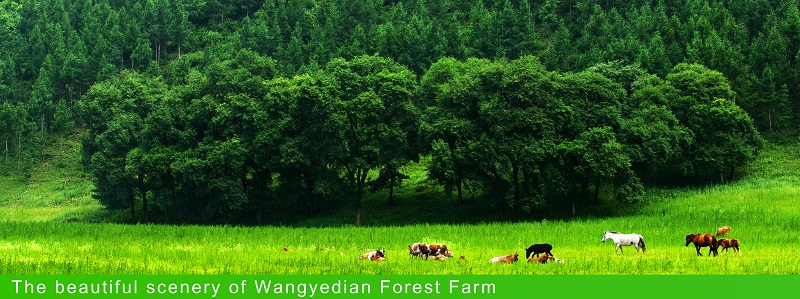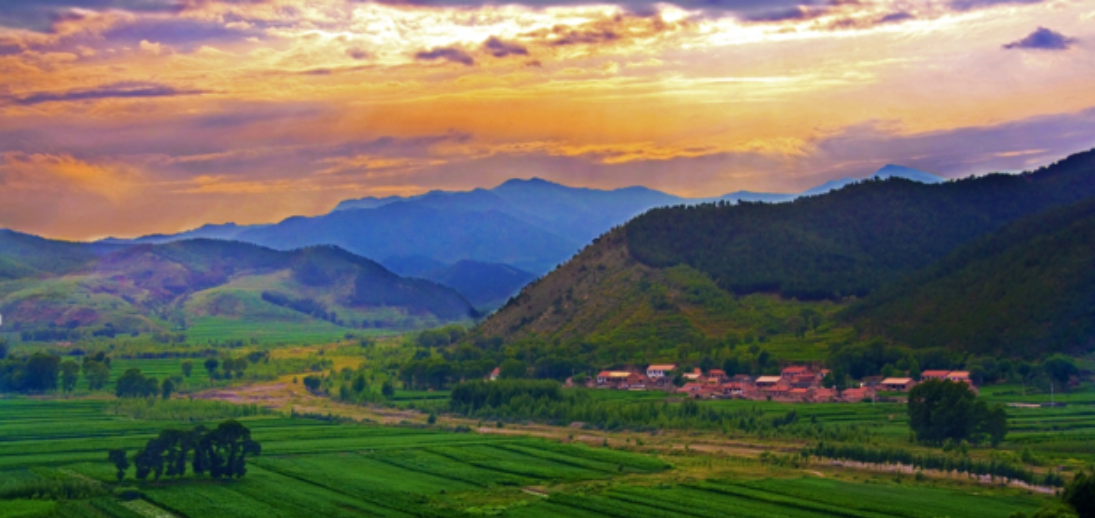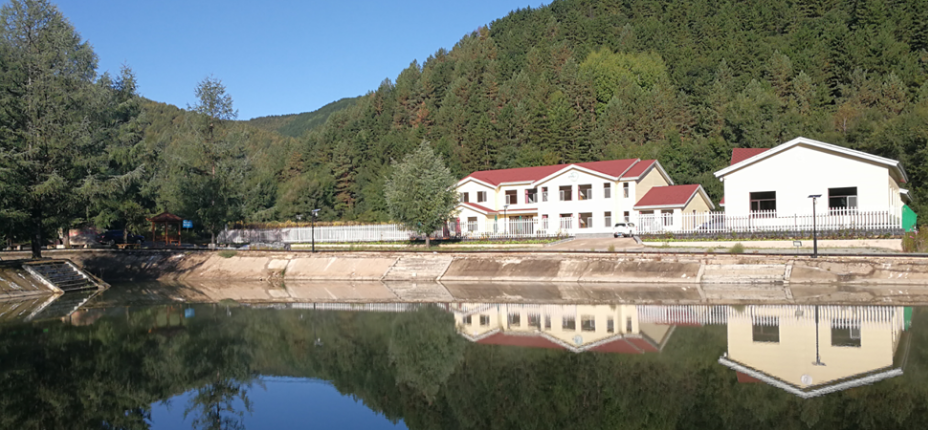Project title: Construction of multifunction forest management demonstration sites – Phase II [2015P8-INM]
Supervisory agency: Chifeng Forest Bureau, Inner Mongolia, China
Executing agency: Wangyedian Forest Farm
Location: Wangyedian Forest Farm, Chifeng, Inner Mongolia, China
Duration: January 2016–December 2019
Budget in USD (total/APFNet grant): 1,641,471/1,314,600
Objectives: Build a sustainable forest management demonstration site for China and Asia-Pacific with a focus on multifunctional forestry that integrates community participation, forest recreation and forest ecotourism, and makes a contribution to sustainable forest management in the Asia-Pacific region.
Expected outputs: Demonstrate reforestation best practices on clear-cut forests and, and close-to-nature forest management on natural secondary forests and plantations; Develop a regional technical guideline on close-to-nature forest transformation of larch and Chinese pine plantations; Expand the APFNet Multifunctional Forest Experience and Training Center to serve as an outreach and education platform on multifunctional forest management; Improve the capacity of local communities and the forest farm for practising sustainable forest management.
Project background
Figure 1. Wangyedian Forest Farm. Photo: Li Fuming
Over recent decades, China has established one of the world’s largest reforestation programmes. While the re-establishment of green cover in China is not finished, it is time to look beyond just planting trees. Both historical conditions as well as a lack of knowledge and available technologies have limited the range of silvicultural practices used for re-establishing forests. As a result, China’s current planted forests largely consist of monocultures, with impeded ecosystem functions and limited biodiversity. Such is the case in Wangyedian Experimental Forest Farm in Inner Mongolia. Government authorities have now recognized the need to introduce new management practices that value community participation and utilize multiple forest functions, to ensure the sustainable production and health of the forest.
In 2011, APFNet launched the first phase of the project “Construction of multifunctional forest management demonstration” in Wangyedian Forest Farm, to demonstrate a multifunctional forest management approach and explore how economic, social and environmental benefits can be balanced and enhanced, both at the farm and in the wider region. In 2016, APFNet extended this project to its second phase, and the objectives were expanded to demonstrate multifunctional forest restoration on a wider range of sites, including clear-cut forests and young and middle-aged natural secondary forests. It also aims to test close-to-nature forest management (CFNM) on mature forests (previously done mostly in young and middle-aged forests), focusing on soil and water conservation and increasing the overall carbon storage capacity of the forests. The project’s second phase will also establish forest recreation areas and a forestry experience and training centre, where education on multifunctional forest management, CFNM and forest rehabilitation can be provided. These facilities can be used to improve the capacities of local communities and forest farm employees on sustainable forest management, and also provide a space for international exchange.
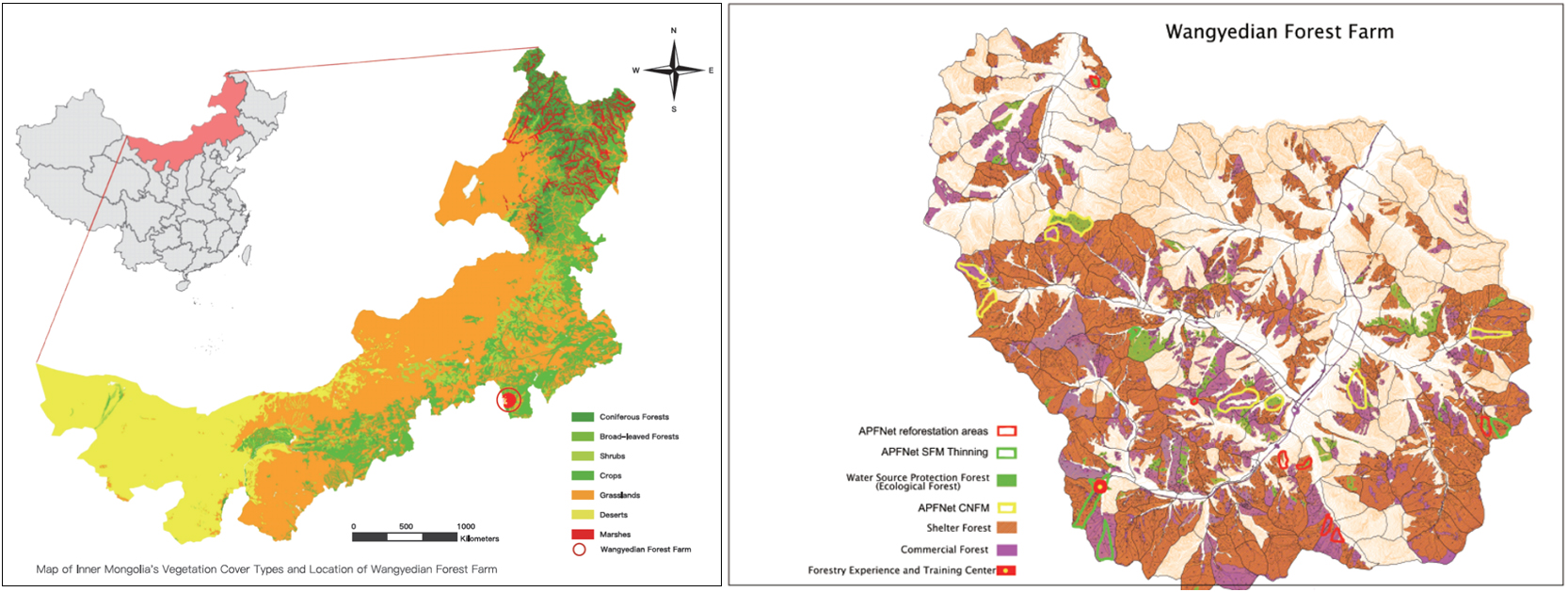
Figure 2. Location of Wangyedian Forest Farm
Project featured topics
Promoting sustainable forest management
♦ Mixed species reforestation
 Figure 3. Reforestation before and after in Wangyedian Forest Farm
Figure 3. Reforestation before and after in Wangyedian Forest Farm
Since the founding of Wangyedian Forest Farm, reforestation has been a key focus. However, due to limited knowledge and technology, reforestation and afforestation was undertaken using traditional methods. The landscape became green again, but monoculture forests occupy nearly 50 percent of the area, resulting in low biodiversity and declining productivity.Figure 2. Forest restoration from bare land to green. Photo: Wangyedian Forest Farm
Reforestation can be done in many different ways. During the first two years of this project, three different approaches for mixed species reforestation on 667 ha of clear-cut land were used:
(1) Reforestation with a mix of coniferous and local deciduous species, with the main purpose of producing high-quality timber.
(2) Combining nut trees with timber trees to provide short- and long-term forest products.
(3) “Recycling” seedlings by planting small seedlings very densely initially to achieve better growth form and later, instead of thinning them out, transplanting to other reforestation sites. Reforestation focused on maximizing recreational values by using especially colourful coniferous and broad-leaved species.
♦ Close-to-nature forest management
CNFM principles were introduced to Wangyedian Forest Farm in the first phase of the project, and different CNFM techniques, such as target tree selection, cutting competitor trees, assisted natural regeneration or enrichment planting, were demonstrated. The main goal was to transform monoculture forests into multi-aged, diverse forests with a structural and species composition mimicking that of a natural forest in later successional stages.
In the second phase, CNFM methods was further applied to young and middle-aged forests and mature plantations. Through thinning out competitor trees in the over-dense young and middle-aged forests, the natural successional processes were accelerated to encourage a diverse and healthy regeneration which could improve the ecological functions of the forests. Enrichment planting was conducted in mature forests after selective cutting of competitor trees. The forest types treated with CNFM methods included:
|
Forest type |
Area |
Age |
|
Aspen (Populus davidiana) natural secondary forest |
66.7 ha |
young and mid-aged |
|
Asian white birch (Betula platyphylla) natural secondary forest |
66.7 ha |
young and mid-aged |
|
Chinese pine (Pinus tabuliformis) and Mongolian scotch pine (Pinus sylvestris) mixed plantations |
9.3 ha |
young and mid-aged |
|
Chinese pine (Pinus tabuliformis) and Prince Ruprecht’s larch (Larix principis-ruprechtii) mixed natural secondary forest |
13.3 ha |
young and mid-aged |
|
Chinese pine (Pinus tabuliformis) plantations |
60 ha |
young and mature |
|
Prince Ruprecht’s larch (Larix principis-ruprechtii) plantations |
17.3 ha |
young and mature |
Forest education and ecotourism development
With society’s increasing prosperity, the intangible and immaterial benefits forests bring are becoming more important. Forest recreation and ecotourism do not only present new ways forests can benefit people, but also new sources of income and livelihoods.
♦ Forest experience and forest therapy trail
In Wangyedian, ecotourism opportunities were recognized early on. Basic facilities were built with the support of APFNet, including the transformation of a 2.2 km forest trail into an educational and therapeutic forest experience trail in 2013. The trail is subdivided into different themes: reforestation, forest biodiversity, forest products, close-to-nature forest management and forest therapy. In each theme, different facilities help tourists understand forests at a deeper level.
Forest therapy, a concept that originated in Japan and was inspired by German practices, incorporates elements of mindfulness, a deepened communication with nature and the aim to experience one’s surroundings with all senses. Wangyedian’s forest therapy trail has been designed to experience the forest with all five senses. Special barefoot walking areas and designated spots for meditation and breathing exercises have been created.
♦ Cabins in the woods
“Forest experience” can be achieved by simply stepping inside a forest. Depending on the season and type, forests will draw visitors in immediately. But forests are often also cultural spaces and these experiences can be enhanced. A creaky hanging bridge over a river, a left-behind water well, lonely cabins in the woods – these are things people connect to forests as much as the trees that make up the forest themselves. To create such an enhanced forest experience, APFNet built a number of facilities for a forest recreation demonstration site. This area is meant to be explored and discovered by tourists that chance upon it – like a surprise they did not expect.
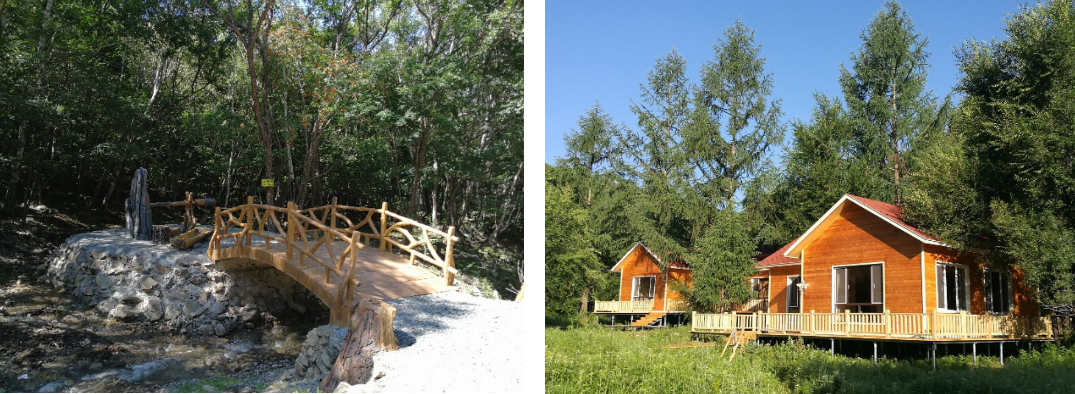 Figures 4. Bridge and cabins in the woods. Photo: APFNet
Figures 4. Bridge and cabins in the woods. Photo: APFNet
♦ APFNet Multifunctional Forest Experience and Training Centre
Established in 2016, the APFNet Multifunctional Forest Experience and Training Centre is a major milestone in APFNet’s goals to enhance its capacity building efforts in northern China. Only four hours away from APFNet headquarters, it presents an ideal location – both immersed in nature and forests, but also close enough for international participants – to conduct workshops and conferences. Providing limited accommodation, the centre serves as an outreach and educational space to share best practices and lessons learned.
Figure 5. APFNet Multifunctional Forest Experiment and Training Centre. Photo: APFNet
